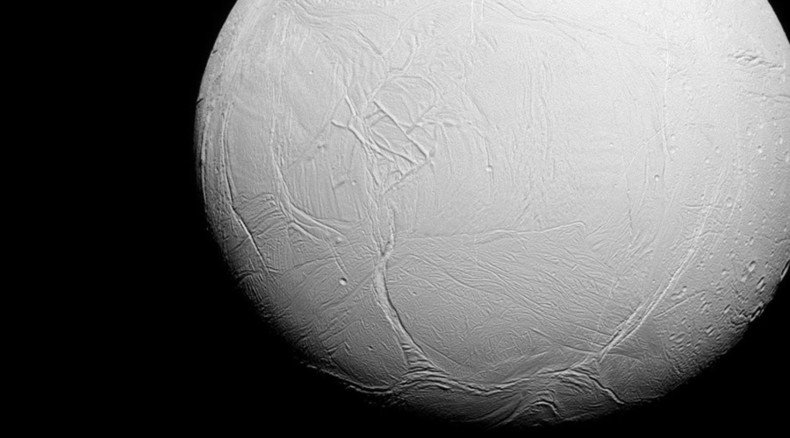Photos pending! NASA probe takes ‘deepest-ever’ dive into Saturn moon’s icy plume

The unmanned Cassini spacecraft has successfully dived into the icy spray of Saturn’s moon Enceladus, deeper than ever before. NASA has vowed to release the images shortly, while scientists are eager to get an answer whether the icy ocean world hosts ingredients for life.
The probe passed 49km above the moon’s south polar region. It sampled and collected data on the icy spray that is believed to come from a subterranean ocean on Enceladus.
First #Enceladus flyby data are in. No images yet, stay tuned. Next opportunity Fri. a.m.
— CassiniSaturn (@CassiniSaturn) 29 октября 2015"Mission controllers established two-way communication with the spacecraft this afternoon and expect it to begin transmitting data from the encounter this evening," NASA said in a statement late Wednesday.
Cassini is not equipped to detect life, but scientists hope that the collected data would anyway shed light on whether the conditions are hospitable to it.
“Confirmation of molecular hydrogen in the plume would be an independent line of evidence that hydrothermal activity is taking place in the Enceladus Ocean, on the seafloor,” said Hunter Waite, INMS team lead at Southwest Research Institute in San Antonio, according to NASA.
The spacecraft is healthy after the #Enceladus flyby. Pictures likely in next day or two. https://t.co/wBibVUmkfepic.twitter.com/KRWUAtSphy
— CassiniSaturn (@CassiniSaturn) 29 октября 2015Earlier this year NASA announced that they are positive that there is a subterranean ocean on Saturn’s tiny moon - sparking talk of possible extraterrestrial life.
‘Saturnian Snowman’: NASA releases ‘best-ever’ northern views of planet’s enigmatic moon
http://t.co/Vny6AMN5HIpic.twitter.com/SDXy17rTOk
— RT (@RT_com) 17 октября 2015Enceladus’ icy plume was discovered in 2005, while Cassini became the first spacecraft to start circling the sixth planet from the sun in 2004.
Saturn moon has subsurface ocean that covers entire body – NASA http://t.co/ZquJUJPrSFpic.twitter.com/0T99354n9J
— RT (@RT_com) 16 сентября 2015











